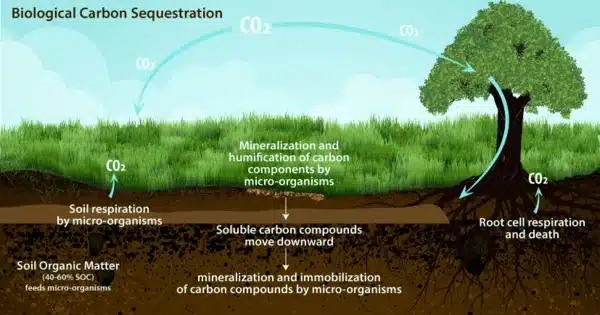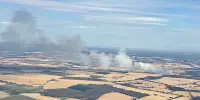Carbon sequestration is the long-term storing of carbon dioxide (CO2) or other forms of carbon in order to minimize or delay global warming and climate change. It is the process of accumulating carbon in a carbon pool. The process is absorbing carbon dioxide produced by human activities, such as the combustion of fossil fuels, and preventing it from entering the atmosphere, where it might add to the greenhouse effect.
Carbon sequestration is a natural process, but it can also be augmented or done through technology, such as carbon capture and storage initiatives. There are two types of carbon sequestration: geologic and biologic. Carbon sequestration methods are classified into three types: geological, biological, and technological.
Geological Sequestration:
- Carbon Capture and Storage (CCS): This involves capturing CO2 emissions from industrial processes and power plants before they are released into the atmosphere. The captured CO2 is then transported and injected into underground geological formations, such as depleted oil and gas fields or deep saline aquifers.
Biological Sequestration:
- Afforestation and Reforestation: Planting trees or restoring forests helps sequester carbon as trees absorb CO2 during photosynthesis and store carbon in their biomass.
- Soil Carbon Sequestration: Improving agricultural practices, such as cover cropping, crop rotation, and reduced tillage, can enhance carbon sequestration in soils.
Technological Sequestration:
- Direct Air Capture (DAC): This technology involves actively removing CO2 directly from the air using chemical processes. The captured CO2 can then be stored underground or utilized for various purposes.
- Ocean-based Sequestration: Certain methods involve enhancing the natural processes by which the oceans absorb and store carbon, such as ocean fertilization or the creation of artificial algae blooms.
CO2 is naturally removed from the atmosphere via biological, chemical, and physical processes. These changes can be expedited by altering land use and agricultural methods, such as shifting cropland to non-crop fast-growing plants.
Artificial techniques have been developed to achieve comparable results, such as large-scale, artificial capture, and sequestration of industrial CO2 using deep saline aquifers or aging oil fields. Other carbon sequestration strategies include bioenergy with carbon capture and storage, biochar, increased weathering, and direct air carbon capture and sequestration (DACCS).













